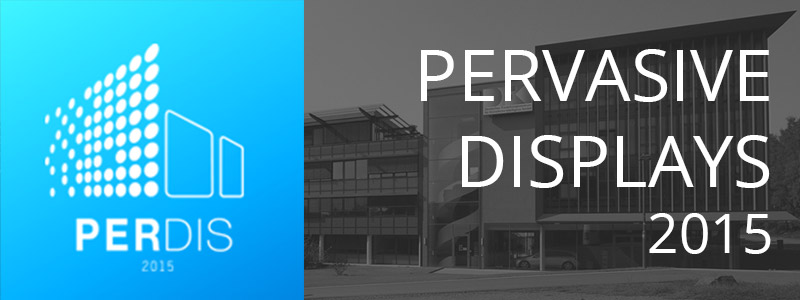

Saarbrücken is located close to the French border (and it has been French until 1957),
which means the region is a mixture of both cultures,
which we are sure attendees, will enjoy. Saarbrücken is the capital of the state of Saarland
in Germany and used to be the industrial and transport center of a great coal basin. Production
included iron and steel, sugar, beer, pottery, optical instruments, machinery, and construction
materials. However, over the past decades the industrial importance of Saarland has declined, as
the mining industry has become unprofitable. Restructuring efforts with a strong focus on IT have
been very successful in the last years, leading to world class Computer Science research at Saarland
University as well as an excellent commercial IT environment (with companies such as IDS Scheer AG and SAP Retail).
Co-located on campus of Saarland University (Universität des Saarlandes) research centers can be found:
As a popular tourist and business destination, Saarbrücken has numerous hotels. Below you can find a list of select hotels that are conveniently located, so that you can take the bus to the conference venue.
The German Research Center for Artificial Intelligence, with sites in Kaiserslautern, Saarbrücken, Bremen (with an associated branch in Osnabrück) and a project office in Berlin, is the leading German research institute in the field of innovative software technology. In the international scientific community, DFKI ranks among the most recognized "Centers of Excellence" and currently is the biggest research center worldwide in the area of Artificial Intelligence and its application in terms of number of employees and the volume of external funds. The financial budget in 2013 was 38 million Euro. DFKI projects cover the whole spectrum from application-oriented basic research to market- and client-oriented design of product functions. Currently more than 420 employees from 60 countries are conducting research focusing on Knowledge Management, Cyber-Physical Systems, Robotics Innovation Center, Innovative Retail Laboratory, Institute for Information Systems, Embedded Intelligence, Agents and Simulated Reality, Augmented Vision, Language Technology, Intelligent User interfaces, Innovative Factory Systems. Impact: more than 60 professorships of former DFKI employees, and 60 spin-off companies with approximately 1,700 highly qualified jobs.
For further information: http://www.dfki.de
Saarbrücken is a popular tourist location, and the weather during the time of the conference should easily allow for outdoor sightseeing. To find a complete overview of all the possibilities Saarbrücken has to offer, please refer to the official Saarbrücken website. Below you can find a list of our recommended attractions (texts taken from saarbruecken.de):
The Alte Brücke connects Alt-Saarbrücken and St. Johann. Originally it consisted of 14 arches, but now only 8 remain. It was destroyed during WWII and subsequently rebuilt before being shortened in the early 1960s to make room for the urban expressway which passes through central Saarbrücken running parallel to the river.
The administration office of the "Saarbergwerke" (Saar Mining Company) was constructed by Martin Gropius and Heino Schmieden in the style of the Florentine Renaissance in 1880. The historical building is now located in the shopping mall Europa Galerie. However, the historical parts conserve their primary aspect. Do not waver to look at the tiled floor, the stairs, or the windows.
It is an ideal place to meet people or saunter through the picturesque alleys scattered around the market square. Since 1978 the old part of town has been a pedestrian precinct. There is a direct view of the castle from the Baroque fountain (designed by Stengel in 1759), and in the past there was also one of the Baroque church Ludwigskirche, from where you could see right up to the castle again – the so-called Stengel triangle.
In the 17th century the castle was rebuilt in the style of the Renaissance, but later destroyed and now only the cellars of this construction remain. In the 18th century Prince Wilhelm Heinrich had his architect Stengel build a new Baroque residence on the same site. Since then the castle has suffered various bouts of destruction and was partially burnt down and reconstructed before being thoroughly and magnificently renovated in 1989. The architect Gottfried Böhm designed a state-of-the-art central block of steel and glass. The castle is now both an administrative centre and a venue for cultural events, conferences and festivities.
Georg J. von Hauberrisser, the architect who designed the town halls in Munich and Wiesbaden, was also responsible for the construction of Saarbrücken’s Neo-Gothic town hall, which was erected between 1897 and 1900. The authentically preserved façade is decorated with sandstone statues representing the trades of bygone times. There is a miner, a smelter, a farmer, a brewer, a merchant, and a tanner. The significance of the figures of St. George and the dragon is unclear, but they probably represent the battle between good and evil. Inside it is worth taking a look at the ballroom, which provides the venue for over 1,000 marriages per year in a festive atmosphere.
It is considered to be one of the most stylistically and aesthetically perfect Protestant baroque churches in Germany, comparable to the Michel in Hamburg or the Frauenkirche in Dresden. Together with the Ludwigsplatz square, the surrounding palace and civil servants' houses, it is part of a unique baroque ensemble completed in 1775. After being completely destroyed during WWII, the church and palace were meticulously and authentically restored. Looking down Wilhelm-Heinrich-Strasse, you have a direct view of the opposite bank of the Saar, a further example of the visual concepts typical to Stengel's architecture.
Since 1978 the street has been rebuilt primarily in the baroque style. Restaurants with idyllic courtyards invite you to linger. High water levels are recorded on the wall at the end of the street (Saarstrasse) to remind passers-by of the proximity and perils of the river.
The ACM OpenTOC is now available here!